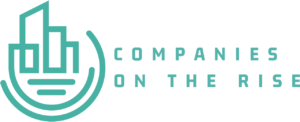
Why Cold Calling Appointment Setting Still Works Today
Cold calling appointment setting continues to thrive, even in a world filled with digital communication tools. Many decision-makers receive countless emails daily but answer only a few, which makes phone calls a more direct and personal way to reach them. Hearing a real human voice builds trust faster than text-based messages, especially when selling high-value or service-based offers. Companies still rely on live calling because it allows real-time discovery of a prospect’s intentions, challenges, and needs. When someone picks up the phone, you instantly gain a window of opportunity to create curiosity and move them toward a scheduled meeting. This method proves particularly effective in industries where relationships matter more than automation. It remains one of the most efficient ways to qualify leads quickly and secure meaningful conversations.
Understanding the Purpose of Appointment Setting Through Cold Calls
Cold calling appointment setting focuses on one primary objective: getting a scheduled meeting on the calendar. It is not about selling on the first call but about sparking enough interest for a prospect to be open to a deeper discussion. Many beginners confuse appointment setting with closing, but these are two separate skills. Appointment setters aim to identify whether a prospect is a good match for the product or service. Asking the right questions and listening carefully helps determine whether the lead is worth passing on to a closer. This process ensures the sales team’s time is used efficiently because only qualified and interested prospects move forward. When done properly, cold calling shapes the foundation of a predictable and scalable sales system.
Essential Skills Every Appointment Setter Must Develop
To succeed in cold calling appointment setting, mastering essential communication skills is crucial. Active listening allows you to catch small details that can improve your responses and increase rapport. Understanding tone and pacing helps prospects feel comfortable even when they weren’t expecting the call. Appointment setters also need strong objection-handling skills, which means staying calm when prospects express doubt or resistance. Confidence is important, but it should be balanced with empathy and respect. The ability to guide a conversation without forcing it helps create a positive interaction that leads to a scheduled meeting. Over time, improving these skills builds consistency, accuracy, and higher call-to-appointment conversion rates.
Building a High-Impact Cold Calling Framework
A reliable call framework makes every cold call more predictable and productive. Many successful appointment setters follow a structure that includes a friendly opener, a clear reason for calling, a value-focused message, a few qualifying questions, and a smooth transition to scheduling. This structure works because it keeps the conversation organized, natural, and goal-driven. Personalization adds warmth to the call and helps prospects feel seen rather than just contacted. A strong script should sound like a guide, not a memorized speech, and good callers adjust based on the flow of the conversation. Asking relevant questions ensures the prospect is suitable for a future meeting. This approach creates a smoother path toward booking a schedule.
Examples of what a good call flow includes:
- A respectful opener
- A short value statement
- Curiosity-driven questions
- Confirmation of interest
- Options for available time slots
Crafting Irresistible Cold Call Openers
Great openers make or break cold calling appointment setting. Prospects often decide within the first few seconds whether to continue the conversation. Permission-based openers, such as asking if they have a quick moment, reduce tension and create cooperation. Keeping the opener friendly but concise prevents the conversation from feeling forced. Many prospects appreciate a caller who respects their time and gets straight to the point. When an opener is crafted well, it sets the tone for a positive interaction and increases the chances of progressing smoothly. Appointment setters who personalize their opener based on industry or role often see better engagement.
Delivering a Compelling Value Proposition
A strong value statement communicates why the call is worth the prospect’s attention. It should be short, clear, and aligned with the prospect’s needs. The key is focusing on benefits instead of explaining the entire offer. Overloading prospects with too much information can overwhelm them, lowering the chances of booking a meeting. When you clearly state how your solution might help solve a familiar problem, the prospect becomes curious. The goal is to open a door, not close a sale on the spot. A strategic value pitch positions the appointment as the natural next step in the conversation.
Navigating Common Objections With Confidence
Objections are normal in cold calling appointment setting, and handling them professionally can turn resistance into opportunity. Many prospects say things like “I’m not interested” simply because they’re busy or caught off guard. Responding calmly shows professionalism and helps re-engage them without pressure. Time-based objections such as “Call me later” can be managed by asking for a better schedule or offering a brief explanation of why you called. When prospects express cost concerns, it’s best not to pitch deeply but instead emphasize the value of a follow-up meeting. Curiosity-driven responses help reopen the dialogue. With steady practice, objection handling becomes smoother and more effective.
Common objections you may hear:
- “I’m busy right now.”
- “We already have a provider.”
- “Just send me an email.”
- “I don’t have the budget.”
- “Who are you again?”
Best Practices for Smoothly Transitioning to the Appointment
Once the prospect shows interest, transitioning toward the appointment becomes much easier. This step requires a calm tone and a focus on collaboration rather than pressure. Offering a choice of time slots makes scheduling feel effortless rather than demanding. Confirming the meeting details helps avoid errors that may lead to no-shows. Many appointment setters also send follow-up reminders, which significantly increases attendance rates. Keeping the transition simple and friendly builds trust. The smoother the process, the more likely the prospect will participate in the future meeting.
Tools and Technologies That Improve Cold Calling Appointment Setting
Modern tools significantly increase the efficiency of cold calling appointment setting. CRM systems help organize lead information and track call history, which reduces confusion and improves follow-ups. Auto-dialers save time by allowing more calls to be made in less effort. Many appointment setters also rely on VoIP solutions for better call quality and lower costs. Scheduling platforms allow prospects to choose meeting times effortlessly. Analytics software reveals which calls work best, helping callers improve their approach. These tools enhance productivity and consistency, making every calling session more strategic.
Metrics That Determine Cold Calling Success
Monitoring the right metrics helps assess the quality and effectiveness of your calling efforts. Connect rate reveals how many prospects pick up the phone, while conversation length shows how engaged they are. The number of booked appointments indicates whether your message resonates well. Show-up rate measures the reliability of your follow-up process. When these metrics are tracked consistently, it becomes easier to adjust your strategy. Benchmarking your performance against industry averages helps you identify areas of improvement. With the right adjustments, you can maintain growth and long-term momentum.
Cold Calling Appointment Setting Tips for Consistency and Confidence
Staying consistent in cold calling requires resilience. Rejection is common, but it becomes easier when you maintain a positive mindset. Starting each day with a short warm-up routine boosts confidence and energy. Practicing various call scenarios helps reduce anxiety and prepares you for different reactions. Organizing your call list in advance minimizes confusion during calling hours. Consistency also comes from celebrating small wins, such as quality conversations or improved delivery. With dedication, confidence grows and performance strengthens over time.
Legal and Ethical Guidelines
Every appointment setter must understand the legal responsibilities tied to cold calling. Respecting Do-Not-Call regulations protects both you and the company you represent. Ethical communication builds credibility and ensures prospects feel respected. It is important to avoid misleading statements or aggressive tactics. Transparency about who you are and why you’re calling fosters trust. Being polite and professional leaves a positive impression, even when prospects decline. Following ethical and legal rules ensures long-term success in the field.
Frequently Asked Questions (FAQ)
1. What is the main purpose of cold calling appointment setting?
The main goal is to schedule a meeting, not to sell immediately.
2. How long should a cold call last before moving to an appointment?
Most effective calls last one to three minutes.
3. Is cold calling still effective in 2025?
Yes, because live human conversations create faster trust and connection.
4. How can beginners reduce anxiety about cold calling?
Practice scripts daily and start with warm-up calls to build confidence.
5. What tools help improve appointment setting?
CRMs, scheduling apps, call analytics, and VoIP tools enhance efficiency.
6. What makes a script sound natural?
A conversational tone, simple words, and flexible phrasing.
7. How do you reduce no-shows?
Send reminders and confirm details clearly at the end of the call.
Takeaway
Cold calling appointment setting remains one of the most direct and effective methods for creating meaningful conversations with potential clients. With the right structure, communication skills, tools, and mindset, anyone can turn calls into scheduled meetings that lead to more opportunities. The key is staying consistent, respectful, and value-focused while continuously learning from each experience.










